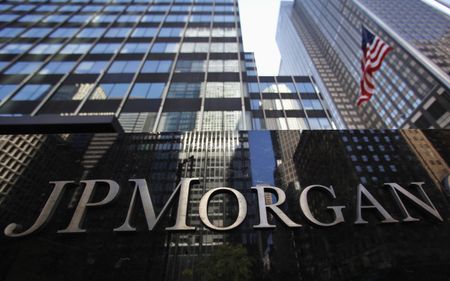LONDON (Reuters) -The group of governments whose bonds get the highest ranking just got smaller, after the United States lost its last triple-A credit rating from Moody’s.
The agency on Friday downgraded the U.S. rating by a notch to “Aa1” from “Aaa”, citing rising debt and interest, and reflecting increased concern about rising debt in big economies.
Here’s a look at what’s at stake.
1/ What is a triple-A rating and why does it matter?
It all comes down to money. The credit rating is a guide to how risky buying debt is for potential investors. Independent agencies examine the metrics of a would-be bond seller to assess their creditworthiness and determine how likely that issuer might be to default on their debt.
The downgrade highlights growing concern about the U.S. fiscal trajectory and has led to some upward pressure on long-dated bond yields, but analysts do not expect a sharp selloff in U.S. assets. The impact on how banks use government bonds, for instance as collateral, should not be significantly impacted, they add.
However, ratings downgrades can be symbolic, as they were during the global financial crisis and euro zone debt crisis.
The U.S. downgrade is potentially more significant because concern has already risen about U.S. trade policy and the dollar’s reserve currency status.
2/ Which sovereigns now have a triple-A credit rating?
The triple-A club has been shrinking for years.
With the loss of the last remaining AAA-rating for the U.S., the group of countries that are the highest ranked by the three biggest agencies is 11, down from more than 15 before the 2007-8 financial crisis.
Their economies account for a little over 10% of total world output.
In Europe, Germany, Switzerland and the Netherlands are the largest economies with the highest rating.
Elsewhere, Canada, Singapore and Australia are in the list.
U.S. debt, meanwhile, ranks below that of the tiny European principality of Liechtenstein, which has a AAA credit score and GDP of just $7 billion, according to the World Bank.
3/ What is the U.S. rating now?
The United States still carries the second-highest rating of AA.
Moody’s was the last of the big three agencies, after S&P Global and Fitch, to lower its U.S. rating, the only time it has done so since 1949.
S&P was the first agency to cut, in 2011, for the first time since granting the U.S. its triple-A rating in 1941. Fitch followed in 2023.
4/ Why are big economies being downgraded?
Rising government debt and concern that not enough is being done to tackle long-term fiscal problems have led to the downgrades.
The U.S. government, for instance, has spent more money than it has collected every year since 2001, leading to annual budget deficits and a debt load of some $36 trillion.
It spent $881 billion on interest payments in the most recent fiscal year, more than triple the amount it spent in 2017. Borrowing costs exceed defence spending.
Other big economies also face rising debt loads from ageing populations, climate change and defence needs. Britain has a debt-to-GDP ratio near 100% and Japan’s is above 250%.
5/ What is a ratings agency?
A ratings agency assesses the creditworthiness of an issuer – that could be a sovereign or a corporate – and assigns a credit rating to the bonds they issue.
Typically, ratings use a letter system run that from AAA for effectively risk-free issuers, to D, for an issuer actively in default.
Ratings are ranked under two tiers: investment grade and high-yield, or junk. The higher the credit rating, the lower the premium that investors demand to hold those bonds, therefore, the lower the interest rate an issuer pays on that debt.
The agencies assess factors including debt, economic growth projections and the strength of independent institutions.
Traditionally, three main ratings agencies – Moodys, Standard & Poor’s and Fitch have dominated. Others, including Morningstar DBRS and Scope, have gained more prominence in the last decade.
(Reporting by Dhara Ranasinghe and Amanda Cooper; Editing by Barbara Lewis)









